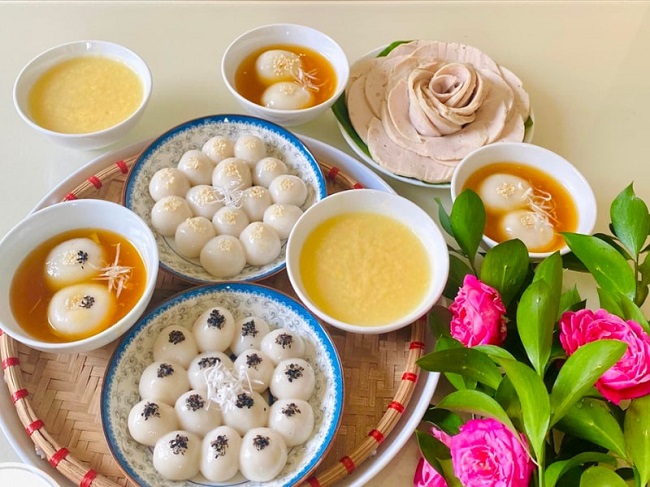The Banh Troi, Banh Chay Festival is a traditional holiday in Vietnam, celebrated on the 5th day of the 5th lunar month each year. It is considered one of the significant festivals in Vietnamese culture, offering an opportunity for people to express gratitude to their ancestors and pray for health, peace, and good fortune. The Banh Troi, Banh Chay Festival is not only a folk celebration but also carries profound spiritual meaning, reflecting respect for cultural values and traditions.
1. Origins and Meaning of the Banh Troi, Banh Chay Festival
The Banh Troi, Banh Chay Festival originated from ancient rituals practiced by the Vietnamese, primarily focusing on ancestor worship and reverence for deities. The 5th day of the 5th lunar month marks a transitional time between spring and summer. Therefore, this festival not only symbolizes the hope for abundant harvests but also serves as a time for purification, expelling evil spirits, and promoting health for all.
Banh Troi (floating rice ball) and Banh Chay (round rice cake) are the two iconic foods of the festival, each with its own symbolic meaning. Banh Troi, round and made of glutinous rice flour, symbolizes completeness and fulfillment. Banh Chay, usually made from glutinous rice flour and filled with mung bean paste, embodies purity and serenity.
2. Activities During the Banh Troi, Banh Chay Festival
Ancestor Worship: On the festival day, families prepare offerings for their ancestors, often including dishes like Banh Troi, Banh Chay, fruits, and tea. This is a time to honor the ancestors’ contributions and pray for protection and good fortune for the family.
Making Banh Troi, Banh Chay: The Banh Troi, Banh Chay Festival is closely associated with making these traditional cakes, especially Banh Troi. Families typically gather to make the cakes together and share them afterward. Banh Troi usually contains fillings like brown sugar or mung beans, and is boiled until cooked. Banh Chay, which is often without filling, can be made in various colors such as white, green, or red, depending on regional traditions.
Eating Banh Troi, Banh Chay: Consuming these cakes during the festival is not just about the food but also about spiritual significance. People eat Banh Troi and Banh Chay to pray for health, happiness, and peace in the coming year. In some areas, it is believed that eating these cakes can ward off evil spirits and bring good luck.
3. Cultural Significance of the Banh Troi, Banh Chay Festival
Spirit of Unity and Family Bonds: The Banh Troi, Banh Chay Festival is a time for families to come together, make cakes, and enjoy each other’s company. This activity not only strengthens family bonds but also helps preserve traditional values.
Honoring Purity and Unity: The shape and color of the Banh Troi and Banh Chay carry profound symbolism of purity, completeness, and unity. This is a time for people to pray for prosperity and peace in their lives.
Preserving Folk Culture: The Banh Troi, Banh Chay Festival is also a means of preserving and promoting the folk traditions of Vietnam. This festival is an essential part of Vietnam’s cultural heritage, helping the younger generation understand and appreciate the nation’s traditions.
4. Development of the Banh Troi, Banh Chay Festival
Today, while the Banh Troi, Banh Chay Festival is not as grand as the Lunar New Year, it is still cherished in Vietnamese families. In urban areas, festivals, cake-making competitions, and traditional performances have helped to maintain and celebrate the unique cultural values of this holiday.
The Banh Troi, Banh Chay Festival is a folk celebration that serves as a reminder of one’s roots while also being an occasion to pray for good luck, peace, and happiness in life.



